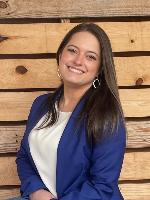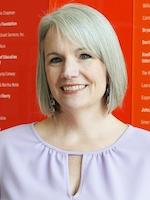Increasing educators’ self-efficacy for integrating CS concepts in the elementary classroom
,
Colorado Convention Center, Bluebird Ballroom Lobby, Table 3
Presenters



Session description
Purpose & objective
This poster aims to share our experiences with Preservice Access to Computing Knowledge (PACK) Success, a collaboration between Friday Institute and the College of Education at NCSU, involving preservice teachers in computer science professional development. PACK Success paid a graduate teaching assistant to offer the instruction, funded research incentives for preservice teachers’ (PSTs) participation, and provided ongoing support for a cohort of elementary PSTs who worked together from January to April, learning ways computer science (CS) and computational thinking (CT) concepts can be incorporated into the regular elementary classroom. We were able to gather pre and post survey and interview data from 8 of the 10 participants.This poster will outline the research study procedures, share PD topics covered in the PACK Success program, and share outcomes based on data collection.
The PACK Success program purpose was to:
1. Increase preservice elementary teachers’ capacity to address computing concepts (CS /CT) in the regular classroom through training and support.
2. Explore and compare the preservice teachers’ needs and perceptions of the effectiveness of the program to the in-service teachers’ needs and perceptions.
The objectives of this poster are to:
1.Share widely about ways we believe we were able to influence the PST self-efficacy for providing CS in the elementary classroom
2. Help that wider audience plan for creating similar learning experiences with in-service teachers.
Outline
In our proposal we theorized their participation could boost the PSTs teaching self-efficacy for adding CS/CT concepts to their future classrooms, and help their future schools broaden participation in computing thereby addressing the underrepresentation of females and non-Asian minorities in CS. During sessions, we made a point to confront common cultural stereotypes about who should prepare for careers in Computer Science and related that to eliminating curricular barriers to CS integration into their own K-5 instruction. For example, students in gifted programs (or even just fast finishers) often have more access to computing through experiences such as Code.org curricula, while students with special needs experience remediation sessions bereft of STEM opportunities. We posed this situation to the participants in terms of offering access to students with special needs through Universal Design for Learning. For example, they were asked to look at computer science integration lessons they had just selected and consider them through a special needs lens. Participants were asked what adjustments could be made, or were needed in the lessons, to make sure all students could access the benefits of the CS content?
Finding 1: The PSTs’ definition of computer science became more expansive after participating in the PD. In the interviews and on comments in the open-ended survey questions, multiple participants began with a conceptualization of computer science through concrete examples of coding in Java or Python (for example) or a class that you take in high school or college. Even those who didn’t start with such a specific definition said they had changed and come to understand computer science differently, more as a way of thinking and problem solving. The interview data also points to this newer, broader understanding of CS as a practice or a collection of skills.
Finding 2: We found a positive shift in the PSTs’ confidence and intention to include CS concepts in their elementary classrooms, regardless of how past experiences shaped their attitude about CS prior to beginning the PD experience. For our pre- and post- survey, students took what we will call the TSTEM CS, a slightly modified version of the TSTEM CT (validated). The only change was substituting the words “computer science” for “computational thinking” (we also provided the CS definition instead of the CT). Initial results in the survey administration show growth in feelings of self-efficacy for teaching computer science. These results matched the open-ended responses towards the PSTs in their answers to the question: “How confident would you feel about incorporating computer science concepts into instruction as an elementary school teacher? Please explain.” On this question 100% of the respondents felt more confident to incorporate CS concepts in their instruction as a teacher.
Finding 3: The PSTs came to realize that providing access to children at an earlier age is advantageous for preparing children for future work. In the interviews, the PSTs were able to give rationale for including CS in elementary classrooms and examples of what they could do when they reach their own classrooms. Similarly, in thinking ahead to being teachers, the PSTs also recognized some challenges (such as funding discrepancies among schools) and potential drawbacks (such as the tendency of computer activities to exclude development interpersonal and motor skills) to an emphasis on CS in the elementary classroom.
Each of the findings here will be matched with ideas on how this information could apply to in-service teacher PD for CS in elementary school.
Supporting research
Despite the fact that the Current Perspectives survey about computer science K-12 education (Gallup, 2020) revealed the majority of superintendents (75%), principals (73%), and teachers (66%) believe computer science (CS) is just as important as core subject teaching, CS courses and content are not widely taught in schools, especially at the elementary level. Only 21% of elementary principals surveyed said computer science was taught at their schools. One barrier may be that many parents, students, teachers, and school administrators do not properly distinguish between computer science activities and general computer literacy (Google & Gallup, 2015). Educators need to understand what constitutes computer science, as well as the related concept of computational thinking (CT), so they may begin to engage students with foundational skills in CS.
CS teachers for stand-alone courses are needed, but perhaps an even greater need is teachers who can make CS and CT concepts an addition to, but also a complement of, their “regular” classroom (Yadav, Hong, & Stephenson, 2016). This in turn could create more widespread access to computing education for all students. The research component of this work investigated the potential influence of the PD on the pre-service teachers’ CS and CT teaching efficacy. Prior research on providing teachers access to and training for technology has shown that teachers’ beliefs can have a great influence on practices that foster student outcomes such as improved knowledge and confidence (Nugent, et.al., 2018).
References:
Gallup, Inc. (2020). Current perspectives and continuing challenges in computer science education in U.S. K-12 schools. Retrieved from https://services.google.com/fh/files/misc/computer-science-education-in-us-k12schools-2020-report.pdf
Google & Gallup, Inc. (2015). Images of computer science: Perceptions among students, parents and educators in the U.S. Retrieved from https://services.google.com/fh/files/misc/images-of-computer-science-report.pdf
Nugent, G., Kunz, G., Houston, J., Wu, C., Patwardhan, I., Lee, S., DeChenne-Peters, S. and Luo, L. (2018). The Effectiveness of a Summer Institute and Remotely Delivered Science Instructional Coaching in Middle and High School. Journal of Science Teacher Education, 29:8, 760-784, https://doi.org/10.1080/1046560X.2018.1514193
Yadav, A., Hong, H. & Stephenson, C. (2016). Computational thinking for all: Pedagogical approaches to embedding 21st century problem solving in K-12 classrooms. TechTrends 60, 565–568, https://doi.org/10.1007/s11528-016-0087-7
Session specifications
Professional Learning Facilitator
- Build the capacity of educators, leaders and instructional teams to put the ISTE Standards into practice by facilitating active learning and providing meaningful feedback.
Connected Learner
- Set goals to remain current on emerging technologies for learning, innovations in pedagogy and advancements in the learning sciences.
 Return
Return Participate and share: Poster
Participate and share: Poster  Trips and Tours
Trips and Tours